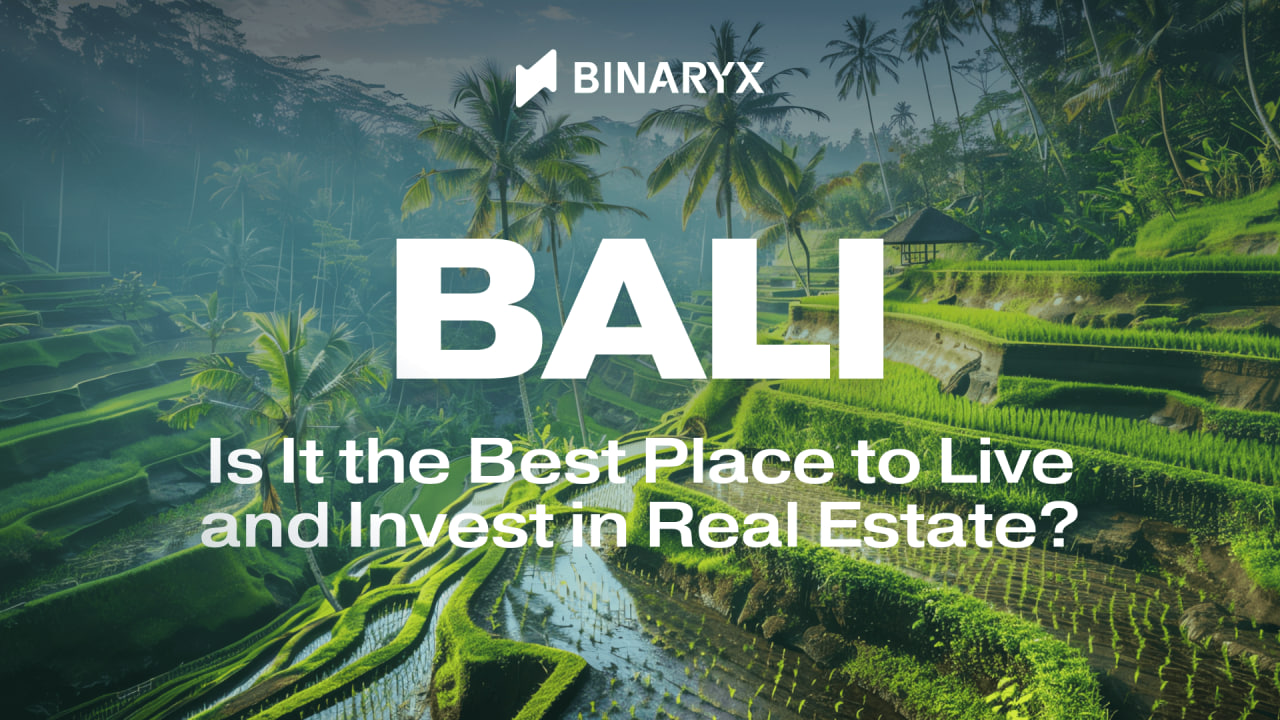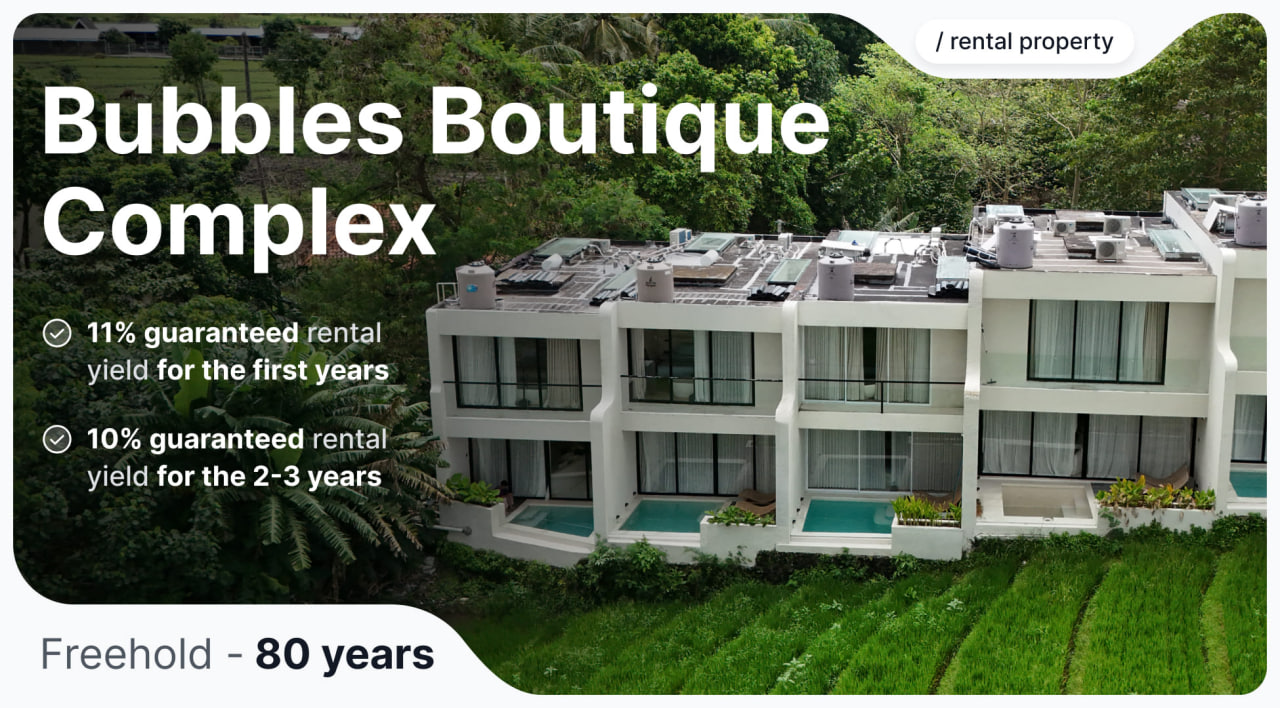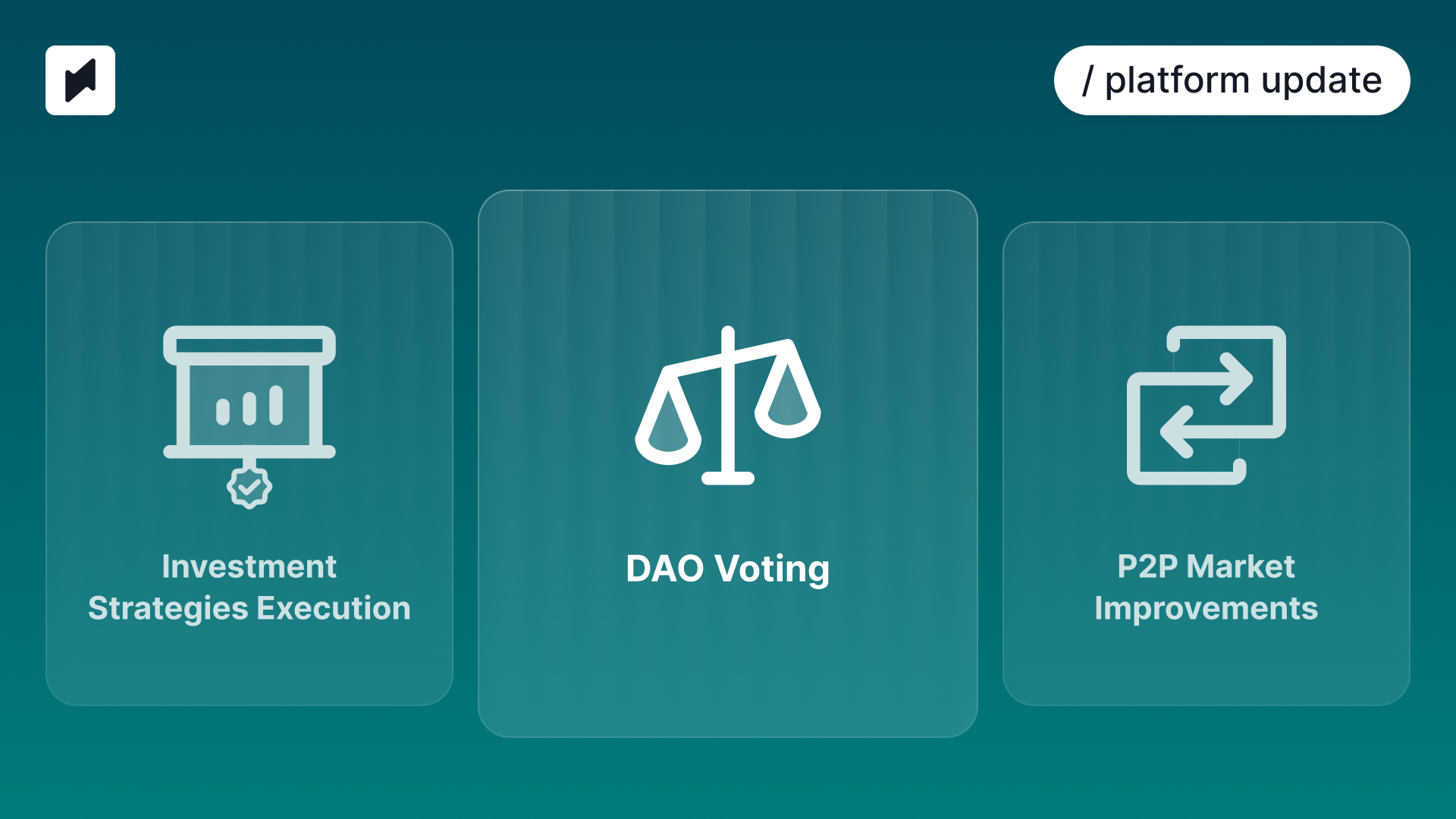Fifteen friends of mine have visited Bali in the last two years, and all of them agreed with my statement, that it’s not only a paradise for surfers and yogis, but also a hotspot for real estate investors too. This tropical island combines increasing tourist traffic, rich culture, and prime location with an evolving real estate market, creating a great recipe for investment success. With these thoughts in mind, I sat down to write this article to give you the idea on why Bali keeps topping the charts as an investor's popular destination. By the end of this article, you'll be ready to pack your bags and your portfolio for the Island of the Gods.
Key Takeaways:
- Tropical Paradise: Enjoyable year-round warm temperatures, perfect for beach activities, swimming, and surfing.
- Booming Tourism Industry: Bali's tourism is thriving after pandemic declines, with millions of international and domestic visitors driving property prices.
- Strategic Location and Accessibility: Bali offers easy access to major cities in Southeast Asia and Oceania, as well as inland infrastructure to live and manage property.
- Neighborhoods to Suit Every Taste: From crowded tourist spots to calm beaches, from exotic water sports to meditation, Bali has a lot to offer.
- Flexible Property Acquisition: There are four ways to acquire real estate in Bali: freehold, leasehold, Real Estate Investment Trusts (REITs), and fractional ownership through tokenization platforms.
- High Return on Investment (ROI): Bali's leasehold system offers lower costs; the climate brings higher occupancy rates; and the demand-supply gap makes investment property more desirable.
Tropical Paradise
- Year-Round Warmth: Bali offers consistently warm temperatures, ranging from 26°C to 30°C (79°F to 86°F), which is perfect for year-round beach activities.
- Two Enjoyable Seasons: Bali has a dry season (April to October) and a wet season (November to March). Even during the wet season, rain comes in short bursts, offering plenty of sunny days.
- Warm Waters: The sea temperatures stay between 27°C and 29°C (81°F and 84°F), which is ideal for swimming, snorkeling, diving, and surfing any time of the year.
- Cool Highlands: Bali’s central highlands, like Ubud and Kintamani, offer cooler temperatures, perfect for hiking and exploring.
- Stunning Sunsets: Bali is famous for its beautiful sunsets, best enjoyed during the dry season from spots like Uluwatu Temple and Seminyak Beach.
Growing Tourism Industry
Bali, often referred to as the Island of the Gods, has become one of the main tourist destination due to its scenic beaches, rich cultural heritage, and vibrant arts scene. The island's various entertainments, from the terraced rice paddies of Ubud to the bustling nightlife of Kuta, attract millions of tourists each year. All of these have forged Bali's reputation as a top global travel spot, which attract visitors seeking both hangout and relaxation.
Due to the pandemic, international tourism suffered a severe hit in 2020 and 2021 - with only 51 international visitors in 2021. However, since the removal of COVID restrictions, Bali's tourism industry has thrived and shown continuous growth: by the end of 2022, there had already been a significant recovery with 2.16 million international tourists. In 2023, 5.27 million international tourists visited Bali, which is still below pre-pandemic levels of 6.28 million in 2019. Domestic tourism hasn't reached pre-pandemic figures either - 9.87 million domestic visitors in 2023 compared to 10.55 million in 2019. Overall, the island hosted a total of 15.14 million visitors in 2023, demonstrating strong recovery and indicating significant upside potential.

Strategic Location and Accessibility
Bali is an island in Indonesia, located in the center of Southeast Asia. That makes it an ideal destination not only for tourists but for digital nomads and real estate investors as well. Bali’s international airport, Ngurah Rai, serves as a critical gateway, offering direct flight connectivity to major cities globally. This accessibility is vital for residents and investors, ensuring ease of travel for both personal and business visits. Here's a table illustrating the approximate travel times from Bali to key cities in East Asia and Oceania:

Besides, the island also offers a wide range of well-maintained roads, modern telecommunications, and utilities, ensuring smooth logistics and convenience both for fast travel around the island and for property management. Whether it's the crowded areas of Kuta and Seminyak or the serene regions of Ubud and Nusa Dua, the infrastructure provides seamless access.
Neighborhoods to Suit Every Taste
There are many different areas in Bali; however, we focus on the main eight, the most famous of which is Kuta. This is where most tourists go. However, almost every district in Bali offers unique living and investment opportunities, providing a variety of choices for different tastes and preferences. Let's go through each one.
Kuta

Kuta Features: Kuta is the main area for tourists, with many hotels, restaurants, stores, and nightclubs. The local beach is a long stretch of sand with lots of activities, perfect for surfing and relaxing. The main street of Legin has an active nightlife with many bars and clubs.
Real Estate Investment in Kuta: It is a popular place for tourist apartment rentals and hotel investment. It is mostly overpriced, so there are better options.
Bukit

Bukit Features: The Bukit Peninsula is known for numerous world-class surf spots, such as Uluwatu and Padang Padang. Also, there is Uluwatu Temple nearby.
Real Estate Investment in Bukit: There are a variety of properties, from budget homes to luxury villas with ocean views. Rental properties built for surfers specifically would be great.
Amed

Amed Features: Amed is a perfect destination for diving and snorkeling, with its tranquil black-sand beaches ideal for relaxation. There are fewer tourists, which is great for a quiet life.
Real Estate Investment in Amed: Attractive for investment in diving centers and resort facilities specifically.
Ubud

Ubud Features: Ubud, a town surrounded by greenery and rice paddies, is a center for art, yoga, and meditation.
Real Estate Investment in Ubud: Ideal for those seeking tranquility and inspiration, Ubud can be an attractive investment in spas and health centers.
Canggu

Canggu Features: Canggu is a popular long-term living point among expats due to the variety of accommodation, from villas to guesthouses, and the many cafes, restaurants, and sports clubs.
Real Estate Investment in Canggu: It is probably the best location for rental real estate.
Lovina

Lovina Features: Lovina is an area on the northern coast with quiet beaches and a calm sea, offering morning boat excursions. It is a corner of local culture with Buddhist temples.
Real Estate Investment in Lovina: It is a great place for some rental bungalow investments.
Candidasa

Candidasa Features: Candidasa is a quiet place with few tourists, volcanic sandy beaches, and proximity to the famous White Sand Beach, Lotus Lagoon, and Goa Lava Bat Temple.
Real Estate Investment in Candidasa : May be suited for some long-term investments.
Nusa Penida

Nusa Dua Features: Nusa Penida is a smaller island near Bali with natural resorts and Bali Bird Sanctuary.
Real Estate Investment in Nusa Dua: It is the place for luxury villas.
Four Ways of Acquiring Property
Traditionally, in Bali, there are two ways to acquire real estate, be it for rental properties or flipping purposes. However, we have added two more that involve freehold or leasehold at some level, but this is not the concern of the individual investor.

Freehold
Freehold ownership grants perpetual property rights but is unpopular among foreign investors due to its complexity. To acquire freehold ownership, you must establish a legal entity in Indonesia and be present in Bali for the transaction. The problem here is that foreign nationals cannot register freehold properties as individuals, so the process must involve locals.
Leasehold
Leasehold is the most popular way for acquiring property in Bali, where investors lease land for long-term periods, typically 25 years but potentially extending up to 150 years. These transactions are straightforward, not requiring local intermediaries or a legal entity in Indonesia, making them way more attractive than freehold ones for foreign investments. Leasehold offers security, as the leaser's rights cannot be contested by the property owner or their heirs.
Real Estate Investment Trusts (REITs)
Real Estate Investment Trusts (REITs) allow investors to buy shares in a trust that owns, operates, or finances income-generating real estate. This format provides an opportunity to invest in high-value properties without the need for direct ownership or management responsibilities. REIT shares can be easily bought and sold on the stock market, and they provide a steady cash flow through dividends.
Fractional Ownership through Tokenization Platforms
Tokenization platforms, such as Binaryx, offer a technologically advanced way to invest in Bali real estate by dividing properties into fractions, allowing investors to purchase those in the form of tokens. This method lowers the investment barrier, enabling participation in high-value projects with a smaller financial commitment, often starting at $50. The platform manages the property and distributes profits to token holders, providing fractional ownership, flexibility, and the benefits of real estate with the liquidity of digital assets.
High Return on Investment (ROI)
Bali real estate offers some of the highest ROI in the world, primarily due to four key factors:
- Leasehold Feature: The leasehold format significantly lowers the cost per square meter compared to straightforward purchases with a classical ownership transition. This allows real estate units to pay off faster since they offer more affordable prices for both tenants and buyers.
- Year-Round Occupancy: In Bali, year-round stable weather conditions eliminate the concept of seasonality, which is crucial for other popular tourist destinations. While an occupancy rate of 70% is considered good elsewhere, it is a pessimistic scenario in Bali. Most properties, even the most luxury villas, have occupancy rates above 70%, while much more affordable units regularly exceed 90%.
- Average Daily Rate (ADR): Bali has the highest ADR in Southeast Asia for five-star oceanfront hotels, averaging around $600 per night. This high ADR significantly contributes to the overall high ROI of near-ocean rental properties.
- Demand for properties exceeds supply. The secondary property market is thriving with high demand and a supply shortage. In 2023, demand for residential real estate reached over 300,000 square meters annually, while supply was at 170,000 square meters. Generally, real estate units are sold within two or three months.
Conclusion
Bali stands out as a premier destination for real estate investment due to its unique combination of natural beauty, strategic location, and robust tourism industry. The island's favorable climate and excellent infrastructure turn real estate management into a pleasure. Various methods of property acquisition, including freehold, leasehold, REITs, and tokenization platforms, provide flexible and accessible options for various types of investors. As Bali continues to captivate visitors and investors alike, its real estate market promises lucrative investment opportunities and long-term gains, making it a wise choice for those looking to diversify their investment portfolio in a tropical paradise.
Articles you may be interested in





.jpeg)




-min.jpeg)



.webp)